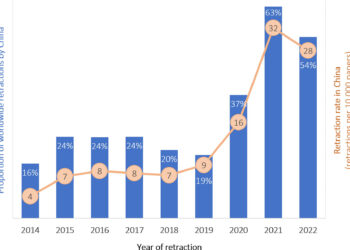 I recently learned the term “microaggression”, used to describe small incidents of thoughtless prejudice or unintended discrimination that together can add up to a miserable catalog for those who experience it. Wikipedia tells us that the phrase was coined by a Harvard psychiatrist in 1970 in the context of racism, but was soon expanded to sexism and thence to “the casual degradation of any socially marginalized group, such as poor people, disabled people and sexual minorities.” The discussion I listened to, between free speech champion Tom Slater and comedian Ava Vidal, touched on several such examples. My initial reaction was eye-rolling despair for our modern times — such as that I typically reserve for, say, “all must have prizes”. Many examples of “microaggression” seemed born of curiosity, an interest in (but lack of fluency in the language of) otherness, naïvety rather than bigotry. I nodded vigorously along with Tom when he suggested that “overreacting” runs the risk of choosing division over unity.
I recently learned the term “microaggression”, used to describe small incidents of thoughtless prejudice or unintended discrimination that together can add up to a miserable catalog for those who experience it. Wikipedia tells us that the phrase was coined by a Harvard psychiatrist in 1970 in the context of racism, but was soon expanded to sexism and thence to “the casual degradation of any socially marginalized group, such as poor people, disabled people and sexual minorities.” The discussion I listened to, between free speech champion Tom Slater and comedian Ava Vidal, touched on several such examples. My initial reaction was eye-rolling despair for our modern times — such as that I typically reserve for, say, “all must have prizes”. Many examples of “microaggression” seemed born of curiosity, an interest in (but lack of fluency in the language of) otherness, naïvety rather than bigotry. I nodded vigorously along with Tom when he suggested that “overreacting” runs the risk of choosing division over unity.
I was pulled up short when Ava pointed out the irony of “a white male telling us what to be offended by, telling us to brush it under the carpet – when it’s not affecting your life.” Touché.
I have been reminded of the discussion in several other contexts since – for example, the UK government’s commitment to “name blind” recruitment and university application processes, and less positively, the ongoing examples shared to #everydaysexism and #womeninSTEM, and the microaggressive stance taken by clickbait news outlets to stories such as “women don’t understand fracking“. And, closer to home, in the context of discussing “codes of conduct” for conferences. I was surprised to learn that it is now commonplace for conference organizers to publish such documents (e.g. SLA, LIBER, InfoToday, O’Reilly, ALA) — not least because they all seem pretty much to boil down to obvious good manners and non-discriminatory behavior. Surely none of us really need a code of conduct to stop us engaging in intimidation or indecent assault? Surely it’s not necessary for organizations (such as Stanford University Libraries) to suggest that employees should not attend conferences that have not codified acceptable and unacceptable behaviors in this way? Again with the eye-rolling — I mean, what’s the most inappropriate thing that’s ever happened to you, or that you’ve ever done, at a conference? How risky is the conference environment to your emotional wellbeing? I imagine something quite anodyne, and not very much.
And again with being pulled up short. Taking the time to read a few codes of conduct reminds me of several examples from our own little world, where Twitter backchannels have got out of hand or misjudged jokes have caused unhappiness — and it turns out many people I know have been on the receiving end of inappropriate behavior, from hurtful comments to uninvited attention. I was even reminded that scantily clad “booth babes” used to roam the halls with giveaways at London’s “Online Information” exhibition (and no doubt elsewhere, astonishing though it seems from today’s vantage point); a Library Journal posting shares more examples. This is where the microaggression theory comes in. Of course we don’t need to be told how to behave at the macro level. But we can probably all think of examples where we’ve witnessed, been subject to, or even perpetrated some behavior that makes us uncomfortable at the micro level. I think there are a number of reasons why conference organizers are starting to take this issue seriously:
- Livestreaming / videoing of conferences. You may judge a comment to be appropriate for those you see around you — but what about the sensitivities of those you can’t see, both in realtime, and for posterity?
- Tweeting and other social media coverage of conferences. Perhaps it’s the relative anonymity of channelling our commentary through an inanimate object, or the challenges of compacting our thoughts into a character limit, or the haste with which livetweeting happens, but not all participants in social media discussion are on the same etiquette spectrum.
- Lower tolerance for perceived discrimination. I don’t mean “people are too sensitive these days”; I mean we recognize that microaggression can open a door to (or be a window onto) aggression that is not so micro.
- Culture of accountability. Conference organizers clearly see that what happens during their event not only reflects on them but may be blamed on them if it is considered that efforts to prevent or address discrimination have been insufficient.
A code of conduct could be perceived as heavy-handed, a blunt tool, casting a negative light on the event. Or it can be perceived as a thoughtful reminder of the breadth of sensitivities we should be alert to in our own behavior, and a framework for giving us the confidence to step in if we have concerns for others. I for one would feel more able to defuse a situation with a gentle, broad “I think you might be straying into Code of Conduct territory” than having to define and call out a specific transgression in the moment.
This then gets to the heart of the matter: what to do about transgressions. Event organizers encourage those who have witnessed, or feel they’ve been subjected to, inappropriate behavior to report it to the conference team, with the assurance that it will be dealt with confidentially, anonymously and comprehensively (e.g. offending parties being immediately removed from the event). This seems strong and supportive and reasonable until we consider that it is judgement without trial, with the transgressor unaware of precisely what they have done to upset whom, and therefore unable either to defend themselves or to learn from the experience. The phrase “at the discretion of the conference organizers” again seems reasonable, but thinking it through from my own perspective as a volunteer for several organizations that run conferences, I’d rather have a clearer course of action set out than run the risk of getting it wrong in the moment. That phrase almost feels like shorthand for, “we’re pretty sure this isn’t going to happen so we don’t really need to go to the lengths of figuring out what we’d do if it does.” And what if a member of the conference organizing committee is involved in the transgression (on either side)? Could we be certain of an unbiased analysis of the facts? Some codes of conduct therefore are accompanied by incident handling guidelines, while others propose adapting anti-bullying protocols that involve open and / or mediated discussion.
I know several readers of The Scholarly Kitchen are volunteers for or employees of organizations that run events. Please share your comments if you have been involved in discussions about Codes of Conduct and are happy to expand on these thoughts with your own experiences, ideas and examples — I think this is an important topic for us to explore, and a good example of where we can benefit from collaboration. For those seeking to explore Codes of Conduct in more depth, there are more examples of transgressions, template documents and links to other blog postings here.
Discussion
21 Thoughts on "Microaggression, Micro Problem? On the Need for Conference "Codes of Conduct""
I am glad you posted this Charlie. Just yesterday I stumbled on this: http://www.astronomyallies.com/Astronomy_Allies/Welcome.html. We all know about what is happening in Astronomy right now with the disgraceful behavior of some of their most revered members. Now we have a conference organized not just with expectations of behavior but also a chaperon system to give attendees a “safe space” if they are feeling threatened, harassed, or stalked. What the hell is going on?
I go to a lot of conferences and you hear about off color remarks or inappropriate jokes, either by speakers or participants during Q&A sessions. It’s not okay. It’s time people (aka older men) look around next time they are at a conference and realize that these aren’t the “old boys clubs” of the past. It’s also time for the men who are uncomfortable with this behavior to take a stand.
Lastly, social media, specifically Twitter, is kind of a mixed bag for conferences. I tweet stuff a lot at conferences and I follow tweets if I miss a conference and there is a lot that gets taken out of context. That said, I take issue with people presenting at conferences and asking people not to share what they are hearing.
Thanks, Angela. That’s so exactly the reaction I had – what the hell is going on? Alarming to think that women delegates might need to be accompanied back to their hotel from conference dinners. That does make me wonder if a code of conduct is anything like enough if there are concerns about that kind of risk (and it puts Twitter snarking in stark perspective). As you say, if enough people take a more visible stand, then hopefully we can shatter any illusion that such behavior is OK.
I’ve been involved with my organization, a small science society, for many years, including a turn as President, and have seen a lot of changes. The key is less in having a code of conduct than in acting to make sure all attendees feel welcome and comfortable. It means having the board members and the organizers make an effort to introduce themselves to each individual, see how they are doing. It means holding events that are interesting but wholesome. (I shudder to think of the keg parties of the “bad old days!”) It takes work, but we no longer can operate with 1960’s values.
Hi Ken – good point – we must all be clearly walking the walk as well as talking the talk. I’m pleased you raise the issue of inclusivity – every now and then I am once again a first-timer, lone-delegate again at some new conference, and that reminds me how unnerving it can be to be in a huge conference room, knowing no-one. A drop of friendliness goes a long way!
Just want to observe and celebrate the All Women Week on Scholarly Kitchen!
This is a great post. Common sense and common courtesy ought to include sensitivity and awareness, and yet… I think a key thing conference organizers can do to signal an intolerance of structural and cultural biases and inequities is to be careful in the composition of their program and especially in their selection of keynoters (I think Angela mentioned this in a previous post?). If the same demographic is on the dais session after session the message is clear. Recent social media campaigns (#Ilooklikeaprofessor is one of my favorites) have been great on calling this out .
This was emailed to me today. A great piece about women keynoters: http://www.forbes.com/sites/nickmorgan/2015/11/03/why-are-there-so-few-women-speakers/
Hi Karin, *laughing* about All Women Week!
I wholeheartedly agree about conference programs. I think I touched on this in my first Kitchen post (http://scholarlykitchen.sspnet.org/2015/02/23/womans-place-in-the-kitchen/) in relation to UKSG, where we continue to strive for more women speakers in our plenary sessions (we don’t have keynotes, as such). It does matter, and it does make a difference, to have some positive discrimination so we can level the playing field, and then all compete again on merit. Yes, that’s idealistic, but I’d rather be idealistic than fatalistic in this matter.
There is value in having a code. Without one, the organizers have to evaluate an incident and justify their response on the spot. The violator says there was no way to know the behaviour crossed a line. Better for organizers to err in the punishment than to leave the victim unsafe.
Heavily involved with the planning of Editorial Manager User Group Meetings, I’ve often wondered about the social media piece. As interested audience members (myself included!) snap and post photos of presenters, their slides, are there permissions we should consider before sharing likenesses/ intellectual property in this way? As presenters, does it go without saying that unless otherwise stated, it’s OK to share our content and image?
Angela, I agree fully with your comments about tweeting out presenter content (as text). Should be accepted and expected, even, at this point.
Hi Alison – that’s an interesting line of thought! Perhaps conference organisers need to add social media permissions to the terms that speakers agree to (in the way that people often now will agree upfront to have video of their talk posted online etc). I was at an event recently where the speaker said clearly that the discussion was happening under Chatham House rules but people in the audience clearly had different interpretations of that and were still tweeting things that were said (not attributing them, but to “release” them publicly at all would have been considered contravention, by some; ironically, those not on social media and blissfully oblivious would probably have been the ones most likely to take issue with such behaviour!) On the other hand, at the 2:AM conference (which I posted about here a couple of weeks ago) there was a pseudonymous blogger speaking, and the audience was very careful not to include him in pictures – it does come back to the same issue: can you trusted your fellow conference goers (to behave appropriately – or to acknowledge your wishes about e.g. social media)? I don’t think the answer is quite as solidly positive as we would hope.
Use of Twitter has become fairly standard at meetings, but in some ways it has had a deleterious effect. There are certain scientific meetings that were deliberately positioned as “private”, in order to encourage speakers to talk about work in progress. If you wanted to publicly quote anything you heard at the meeting, you treated it as a journal would treat a “personal communication” reference, by getting that speaker’s explicit permission. The goal was to make the meeting interesting and to get to hear about things that hadn’t yet been published. It’s a lot more interesting to hear about what’s going on now then it is to hear a summary of a paper you’ve already read.
With the advent of Twitter (though really, blogging came first and brought all these issues to the fore), there is now an expectation that anything you say at a meeting can and will be internationally broadcast. This is good in that it opens up the information from the meeting to the world, but bad in that it has severely inhibited researchers from talking about work that has not yet been published. I know many researchers who have very frankly told me that they will not, under any circumstances, display any data at a meeting that has not yet been in a paper. This allows them to be free from fears of being scooped, or perhaps more importantly, free from being put on the public record making any sort of statement about experiments that aren’t quite yet finalized.
It has also made meetings a lot less interesting.
Which opens up the much bigger issue around how primacy is established. Surely we should be able to move beyond needing the formal journal article to serve that purpose, such that people can freely present (and discuss) work pre-publication?
I think there are some big misconceptions that people have when they think about researchers being scooped. The issue isn’t really one of a researcher doing a program of experiments and reaching a supported conclusion, then having someone swoop in and claim that conclusion as their own. It’s more an issue of dealing with work in progress, and experiments that you haven’t quite figured out yet.
You don’t get a lot of career credit for collecting unexplained data. I always use the phrase, “a technician collects data, a scientist understands data”. The credit is given to the person who makes the intellectual leap that explains the phenomena observed, not necessarily the person who observes it. So it’s understandable that researchers want to keep a lid on data that they’re just in the process of figuring out.
As an example, a lab I worked in made a mutant mouse, altering a gene that was involved in the reproductive system. The mice were fertile, but all died after a about 9 months to a year, and we had no idea why they were dying. It took us several years to get to the reason behind all this, and it worked out as an interesting model for a human disease and made the cover of Nature. Had we gone public immediately with our data, someone else, an expert in that particular disease, might have immediately known what was going on and could have written up the paper referring to our data and appropriately received credit for the breakthrough.
You can certainly argue that it would have been better to have that happen, for progress to move forward faster, but that’s not how the academic career system is set up. Our lab would have been a footnote in their paper, and the resulting career advancement and funding that came to our lab would have gone to theirs so it was in our best interests to sit on the results until we knew what they meant. I don’t think you can create a system to establish primacy for an idea that doesn’t yet exist.
After the recent harassment issues with the SXSW conference program, I’m surprised not to be able to find a code of conduct for their meeting. Perhaps it seems that you don’t really need a code of conduct until you REALLY REALLY need a code of conduct.
Angela, thanks for the article link.
Hi Jocelyn – right! Perhaps it speaks well of human nature that we assume the best until we are confronted with the worst, but I think there’s definitely a sense of conference organisers thinking “well, sure, but *our* conference isn’t going to have a problem with this”. And only when someone has the courage to blow the whistle loudly and publicly do we realise how pervasive the problem is.
This post raises some interesting issues about conference behaviour, and I think we can all agree that conferences should discourage confrontational or negative behaviours, whilst also allowing a free exchange of views.
I am concerned, however, that the ‘macroaggression industry’ is doing some real harms to both those who are increasingly perceiving themselves as victims and those who are being stigmatised as aggressors. There is an excellent article on this subject published in The Atlantic: http://www.theatlantic.com/magazine/archive/2015/09/the-coddling-of-the-american-mind/399356/
I also accept that a conference code of conduct can be helpful in both setting out in advance what is not acceptable behaviour, and in providing a framework for resolving problems. My main concern is that such codes are likely to be ignored or dismissed by the minority of potential transgressors, while for everyone else it creates a climate where we start to think that behavioural problems are to be expected and even feared. I get this sensation when I see those signs, particularly in government offices, that says something like “We will not tolerate aggressive, abusive or violent behaviour towards any member of our staff and operate a zero tolerance approach to violent or aggressive incidents.” Such a sign might provide some comfort for staff, I suppose, but I can’t imagine that this has any effect at all on those few who might be violent or aggressive, while it is potentially creating concern or indignation amongst ‘ordinary’ customers. You could almost say that to publish a list of bad behaviour in a code of conduct is a proxy ‘macroaggression’ by the bad toward the good.
For the Researcher to Reader Conference in London in February, we will be relying on Bill & Ted’s philosophy: “Be excellent to each other”, and in the unlikely event of any problems we will try to handle these appropriately.
Hi Mark – I think you characterise the concern neatly – encouraging victim mentality isn’t necessarily good for anyone involved. I gloss over this above! How do we determine the point at which people really are victims or aggressors, vs people needing a bit of a thicker skin / stiff upper lip? Everyone’s going to have a different benchmark there. How do you ensure that you give support (or censure) where it’s needed? How do you ensure that you handle issues consistently and fairly? I’m still musing on whether “being excellent to each other” (though it makes me smile) is a strong enough stance to let anyone who encounters inappropriate behaviour know that a clear, effective and objective process will kick in if they muster the courage to report it – or a strong enough stance to empower those around them to nip problems in the bud. I think it might be a little too much on the “this isn’t really a problem” end of the spectrum – as I was, until I heard surprising / shocking stories of transgressions, from people I know (and don’t consider to have victim mentality). What’s sobering to me after exploring this is that inappropriate behaviour is *not* an unlikely event (there was a bit of a tweet storm at Charleston last week after a speaker made an anti-LGBT comment, for example), and we could be exacerbating the problem by pretending it is.
Yes there are indeed real and shocking transgressions, which should of course be addressed.
I suppose my main point is that if we try to give people the comfort of a structured and documented process that pre-handles these potential problems with codes of conduct and disciplinary policies, we create additional concerns by highlighting the worst-case issues, and we risk horrible difficulties in codifying what it is ‘appropriate’ and ‘inappropriate’ behaviour, which (as the Atlantic article says) is a highly complex learned set of societal behaviors, not list of documentable rules.
And when we find that it is too hard to create all-encompassing rules, credible investigations and measured sanctions, we risk falling back on: ‘the behaviour is deemed inappropriate if anyone is (or anyone thinks anyone else might be) offended, concerned, triggered, etc’, the threshold is ‘zero tolerance’ and the sanction is ‘exile’, because anything less would be judged to be condoning the transgressions.



